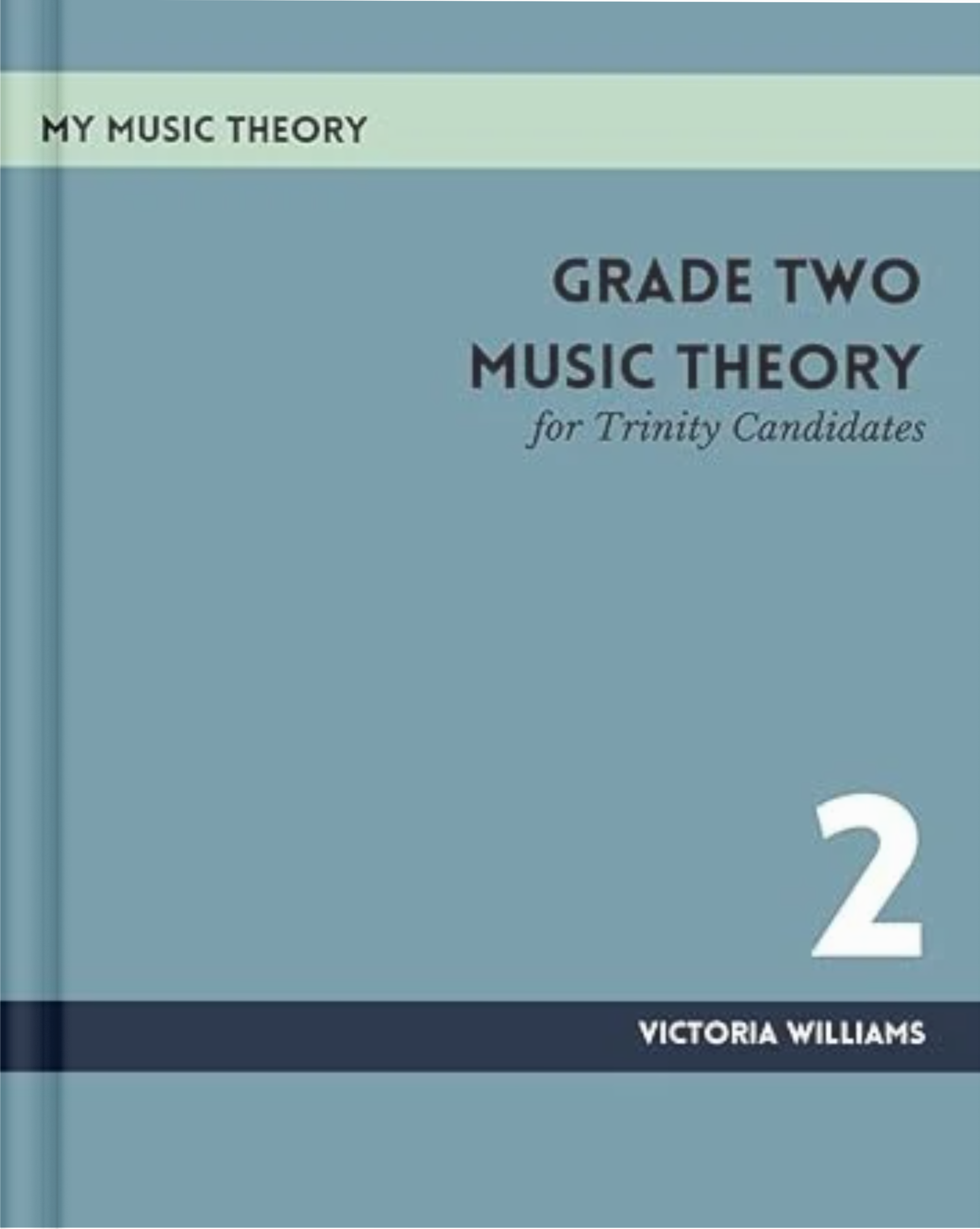Welcome to the Trinity Grade 2 Music Theory start page!
On this page you can find the syllabus information, and links to the free and paid Trinity Grade 2 Music Theory lessons available on this site.
You will find a large number of free lessons on this website, or get the full Trinity Grade 2 Music Theory course in your preferred format:
Trinity Grade 2 Free Music Theory Lessons
- Ledger Lines
- Semiquavers (16th Notes)
- Dotted Notes
- Beaming in Groups
- Tied Notes
- Minor Scales Introduction
- Degrees of the Scale
- Key Signatures and Minor Keys
- Questions on Scales (Trinity Grade 2)
- Transposing at the Octave
- Time Signatures Grade 2
- Adding Bar Lines
- Working out the Time Signature
- Adding Rests
- Tonic Triads – Major and Minor
- Interval Qualities
- Composing a Melody
- Musical Devices
- Syncopation
- Musical Terms Grade 2 (Trinity)
Trinity Grade 2 Syllabus
Rhythm
- Note values of dotted crotchets, single quavers and semiquavers (beamed in 4s only) using English terms (with an option to use American terms, e.g. minim or half note)
- Rest values of dotted crotchets, single quavers using English terms (with an option to use American terms, e.g. minim or half note rest)
- Time signatures of 3/8, 2/2, C and 3/2
- Grouping note and rest values
- Tied notes
- Concept of slow and fast beats being possible in different time signatures (e.g. 3/8 can be slow and 2/2 can be fast) as shown by tempo indications and metronome markings
- Syncopation
Pitch
- Naming and using notes in treble or bass clefs (to two leger lines above or below the stave)
- Related keys, major/minor and vice versa
- A, D and E minor keys, their natural (Aeolian mode) and harmonic minor scales, key signatures, one-octave arpeggios and tonic triads
- First inversions of major and minor tonic triads of keys covered so far (and an understanding of the terms root position and first inversion)
- Identifying the key of a piece in A, D or E minor
- Concept of numbers 1–8 being used to name degrees of the minor scale
- 1st degree of the minor scale being known as the tonic
- Degrees of the minor scale can be at different registers
- Minor tonic triad labelled:
— as a chord symbol above the music (e.g. Am in the key of A minor)
— as a Roman numeral below the music (e.g. i in the key of A minor) - Intervals (unison, major/minor 2nd, major/minor 3rd, perfect 4ths, 5ths and octaves above any
tonic for the grade) - Circle of 5ths relating to the keys above
- Broken chords
- Sequences
- Ranges of soprano, alto, tenor and bass voices
- Transposing a tune up or down an octave within a clef (treble or bass)
- Musical terms and symbols
Download the complete Trinity Music Theory Syllabus here.


